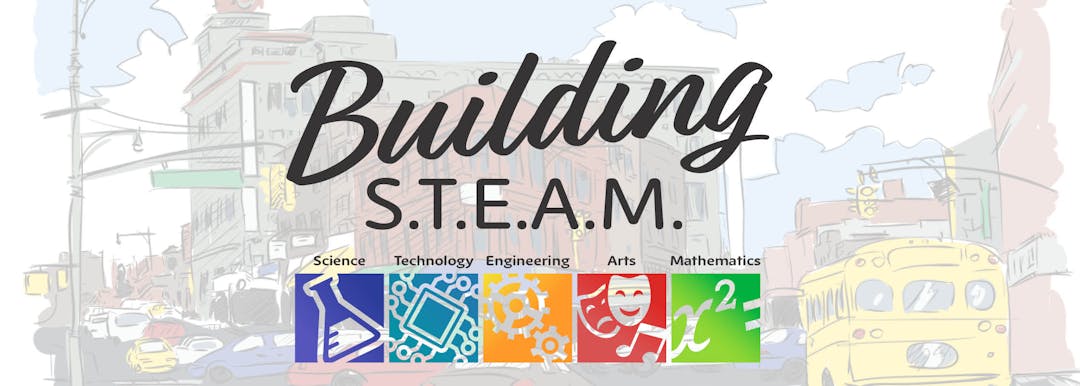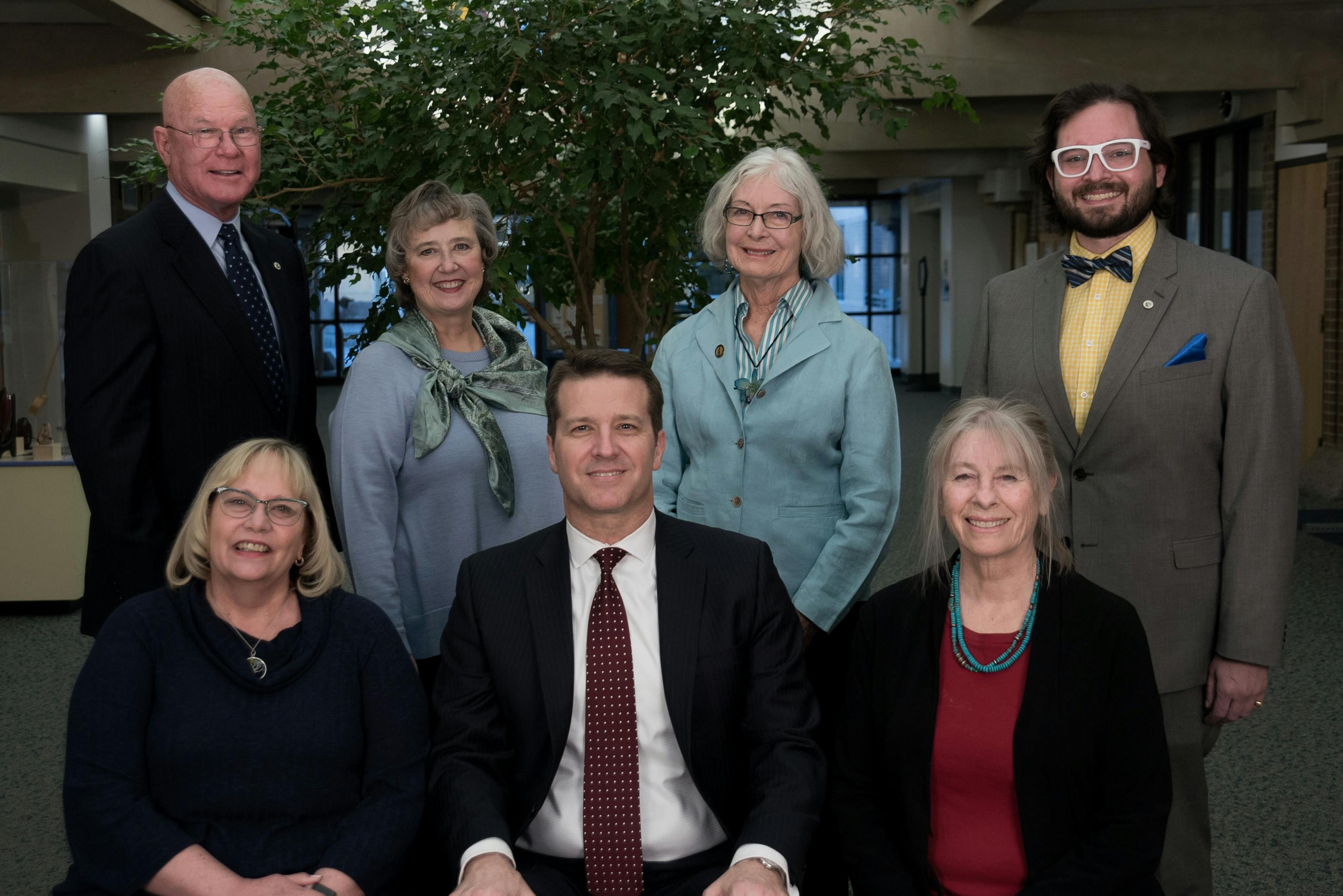Building STEAM: Creating an epicenter of Science, Technology, Education and Arts
Consultation has concluded

This project is picking up STEAM again! When City Council convened the community to visualize what “could be” along specific areas of the St. Vrain River Corridor, there was a lot of community excitement about the potential for this area. The “results” of the year-long engagement process with the community was reviewed by City Council in October 2019.
In 2020, $150,000 was allocated to move those visualizations into a more practical, implementable plan for action. Due to the COVID-19 pandemic, additional work was not able to be completed in 2020, but the funding and intentions will carry through to 2021.
Since the first phase of the visioning process wrapped up, many exciting project ideas have emerged that could redefine the future of lower downtown as the STEAM area is developed.
Staff from the City's Planning and Development Services will work with property owners and community stakeholders to create the next plans for how to move forward with redevelopment of the area. Engage Longmont will be a perfect resource for staying informed and for adding your voice when the City Council requests input from the public on investment and development possibilities.
For more information on the project, contact Tony Chacon, Redevelopment Manager, at 303-651-8318 or via e-mail at tony.chacon@longmontcolorado.gov.
This project is picking up STEAM again! When City Council convened the community to visualize what “could be” along specific areas of the St. Vrain River Corridor, there was a lot of community excitement about the potential for this area. The “results” of the year-long engagement process with the community was reviewed by City Council in October 2019.
In 2020, $150,000 was allocated to move those visualizations into a more practical, implementable plan for action. Due to the COVID-19 pandemic, additional work was not able to be completed in 2020, but the funding and intentions will carry through to 2021.
Since the first phase of the visioning process wrapped up, many exciting project ideas have emerged that could redefine the future of lower downtown as the STEAM area is developed.
Staff from the City's Planning and Development Services will work with property owners and community stakeholders to create the next plans for how to move forward with redevelopment of the area. Engage Longmont will be a perfect resource for staying informed and for adding your voice when the City Council requests input from the public on investment and development possibilities.
For more information on the project, contact Tony Chacon, Redevelopment Manager, at 303-651-8318 or via e-mail at tony.chacon@longmontcolorado.gov.
-
Related Project: Arts Center, Events Center & Hotel Feasibility Study
Share on Facebook Share on Twitter Share on Linkedin Email this linkCLOSED: This discussion has concluded.This month, findings from a market analysis and feasibility study were presented to City Council during a regular Tuesday night meeting. Although the consultants have not yet reviewed locations for a potential performing arts complex or made recommendations on financing options, this information is related to the STEAM process as it is one of the elements envisioned by the community. Download and view this presentation in its entirety.
In the presentation, Johnson Consulting outlined "Phase 1" of the study. They asked questions such as:
- How do Longmont's economics and demographics affect feasibility?
- What other facilities exist in Longmont and surrounding areas?
- What are other communities like Longmont doing with regard to these facilities?
- What are the primary sources of demand for these facilities?
- Are these sources of demand sufficient to support development of new facilities?
- Should new facilities be developed from a market and demand perspective?
Johnson Consulting's analysis of the economic and demographic indicators were favorable "across the board" with findings of a higher concentration of young families relative to state and national averages; a robust, resilient and diverse economic base with low unemployment and healthy industry clusters; and residents having a high affinity for participation in arts programming and for attendance at arts events.Arts Center
Johnson Consulting surveyed community members and received 1,005 responses to find what they were looking for in an arts center. Some answers included:- Capacity to accommodate performing arts audiences for anchor tenants, as well as commercial arts
- Solve issues surrounding booking congestion, limited capacity, insufficient technical infrastructure, limited stage size, and food and beverage capabilities experienced at other Longmont venues
- Multiple venues allow for performances to occur in either larger and more intimate venues, and for performance to occur simultaneously
- Room for growth in the future without overburdening Longmont today
- Alleviates the severe lack of multi-purpose event space in Longmont and the surrounding areas as revealed by the event space inventory and area of opportunity chart
Events Center
For the events center, 119 responses were collected for what community members hoped to see in a future events center:
- Accommodates a variety of event types and users of event space
- Supports the need for event space reflected in the events center survey
- Multiple event spaces allow for events that require both large general sessions and smaller breakouts, allow for multiple events to take place concurrently, and prevents unnecessary flipping of rooms
Key Findings
The top 2 reasons why respondents of the survey leave Longmont for arts events were:- Events aren't offered in Longmont (85% of respondents)
- No facilities in Longmont to host these events (49% of respondents)
In the key findings for the Events Center Survey, 91% of organizations surveyed stated their most frequent event has less than 500 attendees with 31% of organizations surveyed stated their largest event has more than 500 attendees. However, 57% of organizations surveyed stated they exclusively host their events within Longmont.
What could be: Recommendations
Multipurpose Theater
- 1,000-1,500 seats
- Removable seats in the first tier to allow increase capacity for standing audiences or for flat floor, gala-style events
- Proscenium stage with Wing Space
- Lighting and A/V grid
- Orchestra pit
- Matches capacity of Multipurpose Hall to allow for seamless transitions when used in tandem
Multipurpose Room / Black Book
- 5,000 sq. ft.
- 300-350 removable seats
- Flexible stage capabilities
- Lighting and A/V grid
Multipurpose Hall
- 20,000-30,000 sq. ft.
- Highly divisible with flexible configurations
- Accomodates multipurpose events and users
Meeting Rooms / Classrooms / Rehearsal Rooms
- 10,000 sq. ft. in total
- 14 meeting/classrooms/rehearsal rooms of varying sizes
- Highly divisible with flexible configurations
Back of House & Supporting Spaces
- Lobby and pre-functions areas
- Commercial kitchen
- green rooms and dressing rooms
- Restrooms and storage
-
Project Update
Share on Facebook Share on Twitter Share on Linkedin Email this linkCLOSED: This discussion has concluded.Click here to view the entire article.
After public feedback, revisions, etc., the Building STEAM project has developed a series of images of how the area looks currently and what it possibly could look like in the future. See below:
Current conditions:

What ideas did they have? -- Transit Sub Area

What ideas did they have? -- Dickens Sub Area

Public input aligned around:
Areas of Excitement/Interest:
- Higher education/makerspace
- Hotel/convention center
- Mixed-use buildings
- Parking structures
- Overall mix of use (mix of entertainment and residential uses)
- Live Work units
Areas of Concern:
- Intensity/density and height of buildings
- Higher buildings should be multi-use, not only apartments
- Specific property owner concerns
- Growth and effect on the environment
Areas of Mixed Reviews:
- Performing Arts Center
- Parks/green space
- Housing (more, less, affordability)



Action Step Recommendations from Advisory Panel
Library of the Future (13 votes):
- Adopt STEAM goals and objectives with timeline
- Transparent zoning
- Transportation masterplan studies linking communities (5 votes)
- Support transition to "Full Steam Ahead"
Library / Education / Cultural Combo:
- Aggregate higher education / library / makerspace / Cultural and Performing Arts Center (12 votes)
- Performing Arts and Convention Center (7 votes)
- Education Center with Library (1 vote)
- Consider new education models and partnership (1 vote)
- Education resources (0 votes)
Development / Building:
- Balance primary employment uses with residential (12 votes)
- Embrace density -- increase building height/max height possible with community support (5 votes)
Housing:
- Integrate affordable housing throughout (12 votes)
- Ensure equity of access -- Housing, transport, natural resources, library (4 votes)
- Consider standards that are inclusive, sustainable (0 votes)
Environment / Sustainability:
- Utilize sustainability evaluation system and triple bottom line (7 votes)
- Protect riparian corridor (6 votes)
- Establish parameters to protect natural resources (2 votes)
Transportation:
- Emphasize multi-modal transport (6 votes)
- Create car-free areas (2 votes)
- Parking on periphery / buffer with railroad (2 votes)
Infrastructure:
- Build infrastructure first / prioritize investing / funding (2 votes)
- Market studies and data gathering before decision-marking (2 votes)
- Complete plan with Council approval before moving on development (1 vote)
- Acquire land (0 votes)
Comment below if you have any additional suggestions for the Action Step Recommendations or for the Council to consider:
Who's Listening
-
Phone 303-651-8318 Email tony.chacon@longmontcolorado.com -

-

Level of Engagement

- Inform: Give information to the community
- Consult: Obtain feedback from the community



